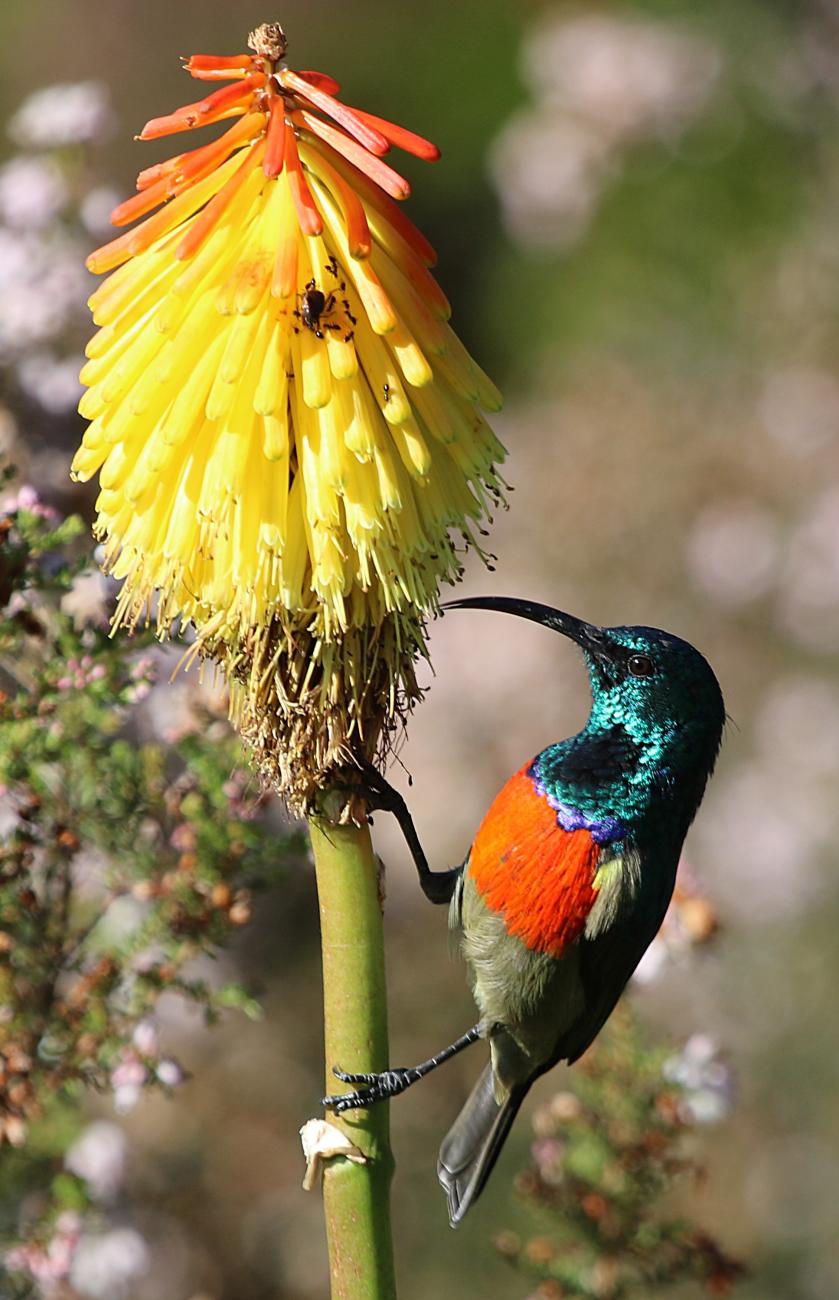Greater Double-collared Sunbird

George Botanic Gardens, Western Cape, South Africa
The greater double-collared sunbird is endemic to South Africa and Swaziland. It inhabits highland fringes, coastal and riverine forests, bushveld, acacia savanna and parks and gardens.
Feeding
The greater double-collared sunbird is a nectivore with the additions to its diet of fruit, and insects and spiders, particularly when feeding its young. As well as taking prey from twigs and leave, it also hunts insects aerially.
Breeding
Unusually, the sunbird breeds all year round. The female constructs a closed oval nest with a side entrance using grass, lichen and other plant material and bound together with spider webs and lined with feathers and fur. It is usually at a height of between two and six metres and located in a tree with protective foliage. One or two eggs are incubated by the female and the alacial chicks are fed by both parents.
Wildfile Specials
- Greater double collared sunbirds hover in front of webs in order to extract the spiders.
- It is able to hover at the mouths of flowers in order to suck nectar but prefers to perch.
- The male greater collard sunbird is bigger than the lesser double collared sunbird, but the latter's wider red breast band and longer beak are more obvious features to distinguish the two.